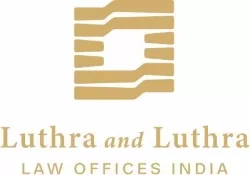India's cross border e-commerce is currently valued about $800 billion annually and is estimated to reach $2 trillion by 20301, as cited by the chief of Director General of Foreign Trade in a media briefing. These figures are reflective of the potential which e-commerce sector holds in the international transactions space. The quick and cost-effective payment solution remains the driving force behind this growth. In this context, the role of FinTech players who have leveraged the technology to introduce low-cost solutions for international payments becomes critical.
Taking cognizance of these developments, the Reserve Bank of India (RBI), on October 31, 2023, has issued a revised framework for cross border payments ("PA-CB Framework"), followed by the public consultation on the draft framework which was issued by the RBI in April 2022 ("Draft Framework"). Prior to PA-CB Framework, the online cross-border payments system for export of goods & services and import of goods & software was regulated through the circulars issued by the RBI in 20102, 20133, and 20154 ("Erstwhile Framework"). Besides this, the online domestic payment systems is regulated through a separate framework issued by the RBI in 2020 ("Domestic PA Framework")5.
Scope and RBI authorization: The PA-CB framework brings all entities that facilitate cross border payment transactions for import and export of goods and services in an online mode, under the direct regulation of the RBI. All such entities shall be treated as Payment Aggregator-Cross Border (PA-CB). The instructions contained in PA-CB Framework are required to be complied by all entities which facilitate cross border payments for import and export transactions, including the Payment Aggregators (PAs), PA-CBs, and Authorized Dealer Banks (Banks). All such entities (except for banks) which are currently providing or intend to provide PA-CB services are required to obtain authorization from the RBI.
This is a significant shift from the Erstwhile Framework, which primarily regulated the Banks, who after obtaining one-time permission from the RBI, were allowed to enter into standing contract arrangements with Online Payment Gateway Service Providers (OPGSPs), to facilitate the processing and settlement of import and export related remittances.
Registration categories, KYC and FTP compliance: Under the PA-CB Framework, authorization may be sought for any one of the following categories (i) Export only PA; (ii) Import only PA-CB; and (iii) Export and Import PA-CB. All categories of PA-CBs are required to undertake merchant due diligence as per the requirements stipulated under RBI's KYC Master Directions6. Additionally, the PA-CBs need to ensure that they do not facilitate export or import of any such goods and services, which are restricted/prohibited under the Foreign Trade Policy (FTP). For facilitating import transactions, PA-CBs may directly on-board the overseas merchants, or may enter into agreement with e-commerce marketplaces or entities providing PA services abroad, subject to undertaking due diligence of each such player/entity.
Additionally, the PA-CBs would need to ensure compliance with all instructions, as have been issued for PAs under the Domestic PA Framework.
Transaction Value: The maximum value per unit of goods /services processed by PA-CB can be INR 2,500,000 (around USD 30,000). This is higher than the limit of USD 2000 and USD 10,000 provided under the Erstwhile Framework, for import and export transactions, respectively. However, in case of import transaction, if the per unit goods/services imported is more than INR 250,000 (around USD 3000), then, the PA-CB would need to undertake due diligence of buyer also.
Registration with Financial Intelligence Unit-India (FIU-IND): As a pre-requisite for obtaining the PA-CB registration, the PA-CBs existing on the date of issuance of the PA-CB Framework, are required to register with FIU-Ind, which is a central agency that collects financial intelligence about offences under the [Indian] Prevention of Money Laundering Act, 2002 read with the rules framed thereunder ("PMLA").
Net-Worth Criterion: The non-bank PA-CB applying for RBI authorization should have a minimum net worth of INR 15 crore, certified by a statutory auditor, and shall attain net worth of INR 25 crore by end of 3rd financial year of authorization. This is similar to the net worth criterion provided for the domestic PAs.
Collection accounts and routing of funds:
- For import transaction: The payments need to be first received in the escrow account of the PA, and then need to be transferred to the Import Collection Account (ICA) which has to be maintained by PA-CB with AD Category-I scheduled commercial bank. The onward transfer to the foreign merchants shall happen only by debit to the ICA.
- For export transaction: The PA-CB shall maintain Export Collection Account (ECA) which can be denominated in Indian Rupees (INR) and / or foreign currency (i.e. non-INR) with AD Category-I scheduled commercial bank. Separate ECA shall be maintained for each foreign currency, and the export proceeds shall be credited to the relevant currency ECA. Further, the settlement in foreign currency shall be permitted only for those merchants which have been directly on-boarded by the PA-CB.
Besides, the PA-CB engaged in domestic PA activities will need to keep ICA/ECA separate from the escrow account. Further, for the purpose of maintenance of the ICA/ECA, operations of the PA-CBs shall be deemed to be "designated payment systems" under Section 23A of the [Indian] Payment and Settlement Systems Act, 2007 after authorisation is given by the RBI.
Takeaways:
- The most striking element of the PA-CB Framework is that unlike the Domestic Framework, it does not provide for any express distinction between payment aggregator (PAs)7 and payment gateways (PGs)8. All entities that facilitate cross border payment transactions for import and export of goods and services in an online mode, have been treated as PA-CBs, and all non-bank PA-CBs have been mandated to obtain RBI authorization. However, the Domestic Framework regulates only the activities of PAs and mandates PAs to obtain RBI authorization, whereas the PGs have been simply recommended to follow the baseline technology recommendations as provided therein, and no authorization is required under Domestic PA Framework for carrying out PG activities.
It is also peculiar to note that the Draft Framework for cross border payments, provided that entities which facilitate import transactions shall be treated as PAs, whereas the entities which facilitate export transactions shall be acting as PGs, and the Draft Framework mandated only PAs to obtain RBI authorization. As such express distinction has not been built-in in the final PA-CB Framework, it remains to be seen if the RBI holds PGs to be within the ambit of the new framework, and in such a case, how would the PGs practically ensure compliance with the stringent norms including the net worth, KYC, diligence requirements etc. as built under the new PA-CB framework.
- The mandatory registration of PA-CB with FIU-IND is a reflection of the tough stance which the Indian regulators have been taking to prevent money laundering activities. With FIU-IND registration, the PA-CBs would be treated as reporting entity under the PMLA provisions, which casts the obligation on the reporting entity to verify identity of clients, maintain records and furnish information to FIU-IND.
In a related context, the findings of the Delhi High Court in its recent judgement in the Pay Pal matter9 becomes relevant. The Petition, in the said matter, was filed by Pay Pal against the order of FIU-IND holding it to be a reporting entity under the PMLA provisions. The Pay Pal, inter alia, asserted that it merely provides a technological interface enabling export-related transactions between an Indian exporter and an overseas buyer, and that it at no stage engages in handling of the funds - hence, it should not be treated as 'payment system operator' under the PMLA provisions, and consequently is not obliged to reporting entity obligations as placed under PMLA. The Delhi High Court, however, held that the reporting obligations under PMLA are not limited to entities which directly engage in the handling or transferring of funds but shall also extend to entities which enables the transfer of money between the two ends.
- The PA-CB Framework has widened the scope for import transactions by covering all 'services' within its ambit, which under the Erstwhile Framework was limited to 'software'.
The Erstwhile Framework and the Draft Framework for cross border payments, stipulated a requirement for creation of a Reserve Fund for refunds / disputes situation. The PA-CB Framework does not provide for a similar requirement. In alternate, the minimum net worth threshold as has been built in for PA-CB, would ensure that entity operating as PA-CBs is financially sound and have viable operations, which in turn is expected to provide safety to customer and protect merchant's interest.
Concluding remarks:
The revised PA-CB framework would enable the non-bank Fintech players the autonomy to directly offer cross-border payment solutions within a well-defined structure, without the need to enter into independent arrangements with the banks as was required under the Erstwhile Framework. This, however, comes at the cost of complying with the stringent instructions as built in the PA-CB Framework.
The move is expected to provide multiple, quicker and less expensive payment solutions to the business, e-commerce entities, as well as retail customers, for the international transactions. It also provides the flexibility to domestic PA-CB providers to on-board foreign as well as domestic e-commerce giants, thereby providing opportunities for business expansion. Simultaneously, the stringent due diligence, KYC, FTP compliance and other codified requirements are expected to prevent illegal cross-border transactions and ensure customer protection.
Footnotes
2 Processing and Settlement of Export related receipts facilitated by Online Payment Gateways' - A.P. (DIR Series) Circular No. 17 dated November 16, 2010
3 Processing and Settlement of Export related receipts facilitated by Online Payment Gateways – Enhancement of the value of transaction' - A.P. (DIR Series) Circular No. 109 dated June 11, 2013
4 Processing and settlement of import and export related payments facilitated by Online Payment Gateway Service Providers' – A.P. (DIR Series) Circular No.16 dated September 24, 2015
5 Guidelines on Regulation of Payment Aggregators and Payment Gateways' DPSS.CO.PD. No.1810/02.14.008/2019-20 dated March 17, 2020; read with the Clarification dated September 17, 2020
6 Master Direction - Know Your Customer (KYC) Direction, 2016 - RBI/DBR/2015-16/18 Master Direction DBR.AML.BC.No.81/14.01.001/2015-16 (updated from time to time).
7 Under the Domestic Framework, the PAs are defined as: 'PAs are entities that facilitate e-commerce sites and merchants to accept various payment instruments from the customers for completion of their payment obligations without the need for merchants to create a separate payment integration system of their own. PAs facilitate merchants to connect with acquirers. In the process, they receive payments from customers, pool and transfer them on to the merchants after a time period'.
8 Under the Domestic Framework, the PGs are defined as: 'PGs are entities that provide technology infrastructure to route and facilitate processing of an online payment transaction without any involvement in handling of funds.'
9 Paypal Payments Private Limited v. Financial Intelligence Unit of India, 2023 decided on 24-07-2023.
The content of this article is intended to provide a general guide to the subject matter. Specialist advice should be sought about your specific circumstances.


